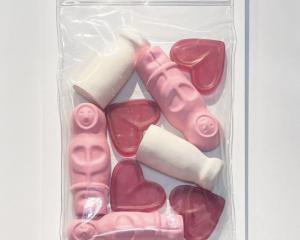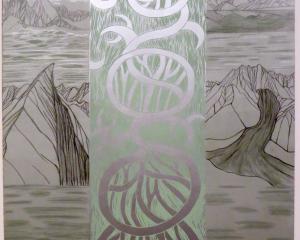James Dignan rounds up the latest in exhibitions.
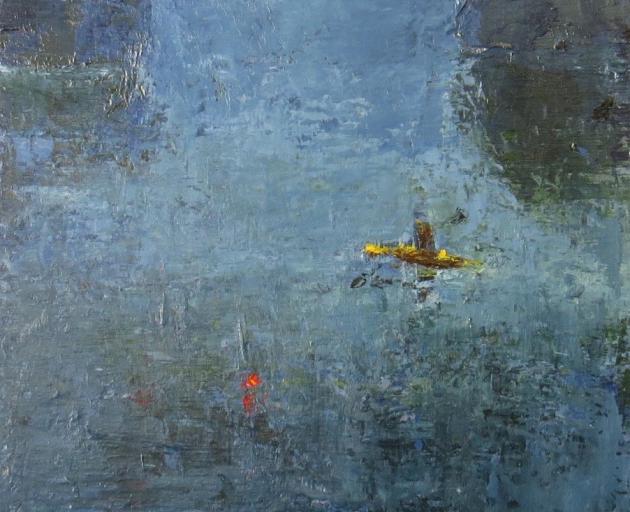
"Dark Sounds", Pauline Bellamy
(Pea Sea Art)
The deep waters of Fiordland have been an inspiration for many artists, and they are a frequent subject for Otago Peninsula artist Pauline Bellamy.
Drawing from a midwinter visit to the wilds of Doubtful Sound/Patea, the artist has created a series of paintings and prints which focus largely on the reflections on the dark tannin-stained waters of the sound.
The paintings, predominantly in acrylic, largely place the horizon close to the top of the frame, allowing the watery reflections to take centre stage.
This is an effective technique, and the washes of colour in works such as the Quiet Water pieces make for attractive meditations on the motion of light. In other works, such as the acrylic Kepler Mountains and its namesake drypoint etching, it is the light on the mountain slopes which forms the central focus of the image.
The damp, drizzly weather of the fiords is well captured in the washes of colour which form the basis of three monotypes (Kotuku, Crooked Arm, and Deep Cove), but the essence of the vast emptiness of the region is perhaps best captured, ironically, in the one image that features a human presence - the form of a lone kayaker depicted against the distant mist-covered mountains in the impressionistic acrylic Alone.
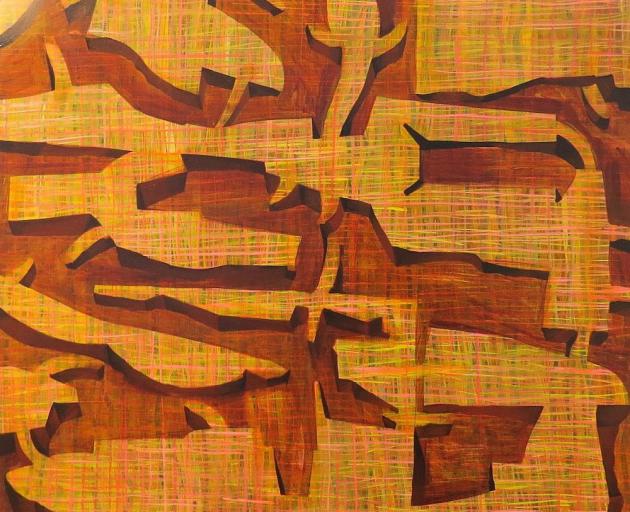
(Gallery De Novo)
Jenufa Waiti presents an intriguing array of semi-abstract paintings in her exhibition at Gallery De Novo. Whereas Jenny Geelan’s exhibition involves the removal of paint to create her gardens, with Waiti paint "frames" are added over the top of the artist’s linear abstracts.
In many of the works, meshes of freehand horizontal and vertical lines form coloured organic grids, over which layers of semi-translucent paint have been added.
This is particularly effective in works such as Double Down, in which the over-layered paint has been deliberately shaded to produce the perception of three-dimensional forms breaking free from the surface of the canvas.
Also intriguing are works like Tuvix, in which abstract forms have been overlaid with an opaque wash of blue, creating the illusion of silhouetted figures.
A series of simpler works entitled Space and Divide are also effective. In these, rich horizontal abstractions of deep orange are added to by darker block forms, giving the impression of stylised sunset coastlines.
The illusory nature of these ‘‘landscapes’’ is brought to the viewer’s attention in the Space paintings, in which the apparent mountains float free from the base, revealing them to be the abstract shapes and forms which they actually are.
This revelation, however, if anything enhances the appreciation of the works.
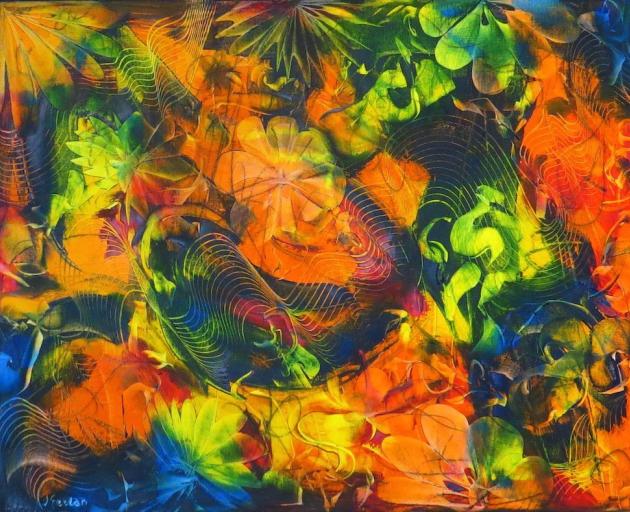
(Koru Gallery)
Jenny Geelan uses a process of repeated application and removal of paint to create her bright impressions of gardens in bloom.
Geelan applies her paints largely by means of a palette knife, and once applied the paint is pared back, the artist scraping away at the textures and reapplying further layers of paint to build up her boldly coloured images.
While brush is occasionally used, it is the scraping back of paint which provides the majority of the structural elements in the works.
While few blooms are directly depicted, the shaping of the paint gives the impressions and implications of flowers, and the essence of a carpet of flowers is clearly present in many of the works.
No one colour holds sway across the paintings, with strong vermilions dominating works such as Blooming Beautiful, and nearby more restful blues and pinks forming the central hues of Deep Peace.
‘‘Finding Joy in Troubled Times’’ is Geelan’s debut exhibition, and the Kingston-based artist credits workshops held earlier this year by Vjekoslav Nemesh as being a major factor in her artistic awakening.
Music is also an important source for the artist’s inspiration, and its influence occasionally shows through in the titles of works such as Sonata and Playing With Jazz.







![Untitled (c. mid 1990s, [pink 3]), by Martin Thompson, 415mm×590mm. Photo: courtesy of Brett...](https://www.odt.co.nz/sites/default/files/styles/odt_landscape_small_related_stories/public/story/2024/02/untitled_pink_3.jpg?itok=Q0aQrc9o)



